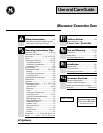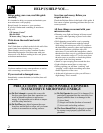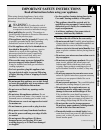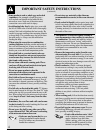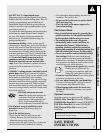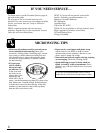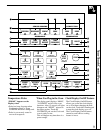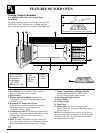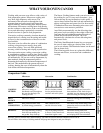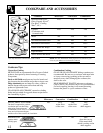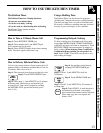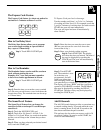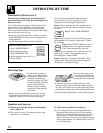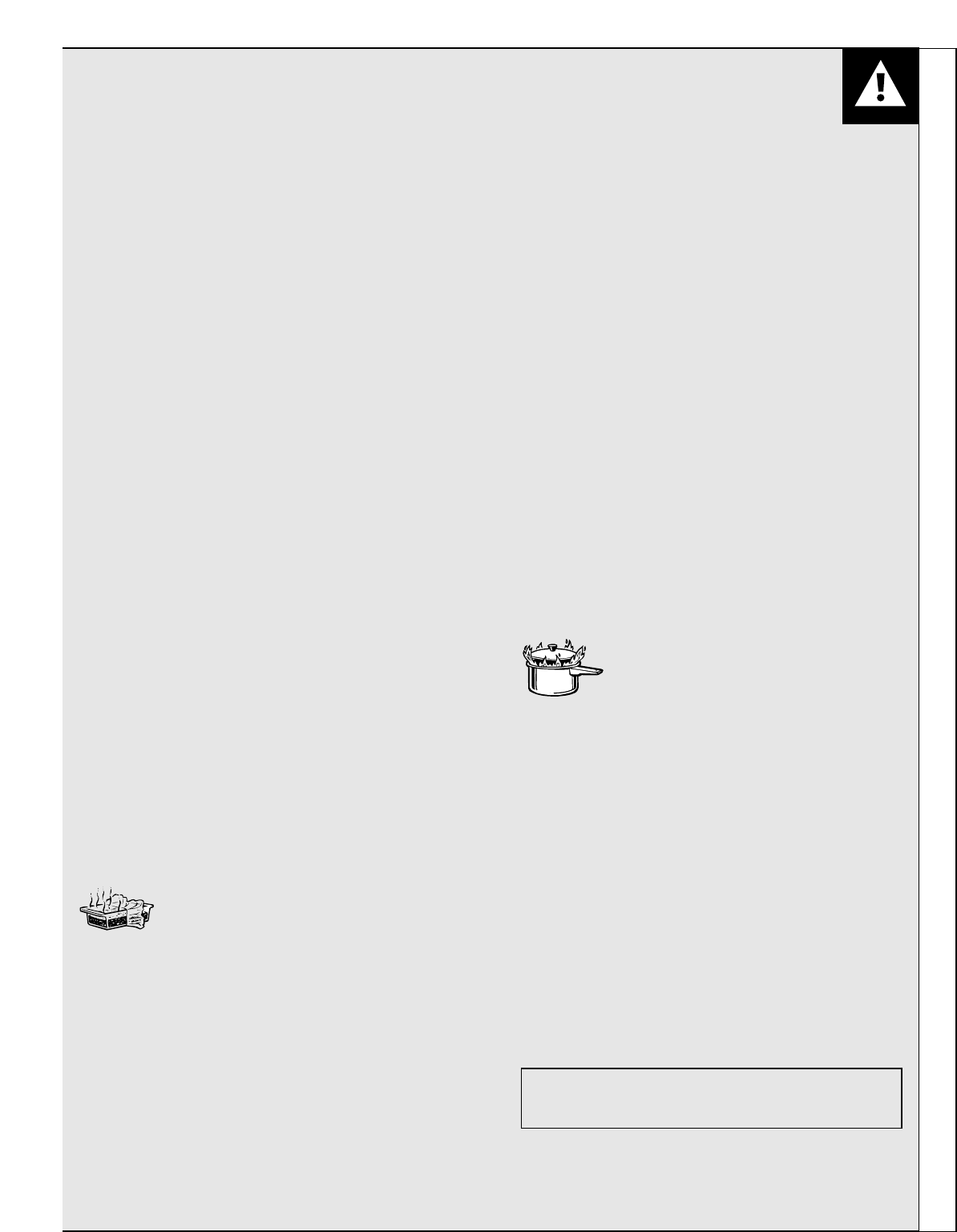
Important Safety Instructions
SAFETY FACT—Superheated water.
Microwaved water and other liquids do not always
bubble when they reach the boiling point. They can
actually get superheated and not bubble at all.
Superheated liquid will bubble up out of the cup
when it is moved or when something like a spoon
or tea bag is put into it.
To prevent this from happening and causing injury,
do not heat any liquid for more than 2 minutes
per cup. After heating, let the cup stand in the
microwave for 30 seconds before moving it or
putting anything into it.
• Spontaneous boiling—Under certain special
circumstances, liquids may start to boil during or
shortly after removal from the microwave oven.
To prevent burns from splashing liquid, we
recommend the following: before removing the
container from the oven, allow it to stand in the
oven for 30 to 40 seconds after the oven has shut
off. Do not boil liquids in narrow-necked
containers such as soft drink bottles, wine
flasks and especially narrow-necked coffee
cups. Even if the container is opened, excessive
steam can build up and cause it to burst or
overflow.
• ‘‘Boilable’’ cooking pouches and tightly closed
plastic bags should be slit, pierced or vented as
directed by package. If they are not, plastic could
burst during or immediately after cooking,
possibly resulting in injury. Also, plastic storage
containers should be at least partially uncovered
because they form a tight seal. When cooking
with containers tightly covered with plastic wrap,
remove covering carefully and direct steam away
from hands and face.
• Hot foods and steam can cause
burns. Be careful when opening any
containers of hot food, including
popcorn bags, cooking pouches and
boxes. To prevent possible injury,
direct steam away from hands and face.
• Not all plastic wrap is suitable for use in
microwave ovens. Check the package for
proper use.
• Use of the shelf accessory:
—Never use the shelf for microwave-only
cooking. Remove the shelf from the oven
when microwave-only cooking.
—Always place the shelf on the floor of the oven
for Convection and Combination cooking.
—Use pot holders when handling the shelf and
cookware. They will be hot.
—Do not use the broiler pan or spatter shield
while microwaving.
—Place the shelf on the upper supports for
convection broiling.
The Exhaust Hood
• Have it installed and properly grounded by a
qualified installer. See the special installation
booklet packed with the microwave oven.
• The exhaust fan in the oven will operate
automatically under certain conditions (see
Automatic Fan Feature). While the fan is
operating, caution is required to prevent the
starting and spreading of accidental cooking fires
while the exhaust fan is in use. For this reason:
—Never leave surface units unattended at high
heat settings. Boilovers cause smoking and
greasy spillovers that may ignite and spread if
exhaust fan is operating. To minimize automatic
fan operation, use adequate sized cookware and
use high heat only when necessary.
—In the event of a grease fire, smother
flaming pan on surface unit by
covering pan completely with well-
fitting lid, cookie sheet or flat tray.
—Clean the vent hood often. Do not allow grease
to build up on the hood or the filter.
—Use care when cleaning the vent hood filter.
Corrosive cleaning agents, such as lye-based
oven cleaners, may damage the filter.
—When flaming foods under the hood, turn
the fan off. The fan, if operating, may spread
the flame.
Optional Accessories
Available at extra cost from your GE supplier.
JX40AL Filler Panel Kit (for model JVM290AV).
JX40WH Filler Panel Kit (for model JVM290WV).
JX41 Filler Panel Kit (for model JVM290BV).
JX81 Charcoal Filter Kit for non-vented
installation.
SAVE THESE
INSTRUCTIONS
This microwave oven is UL listed for installation
over electric and gas ranges.
5



